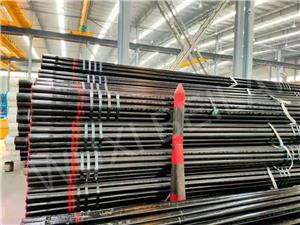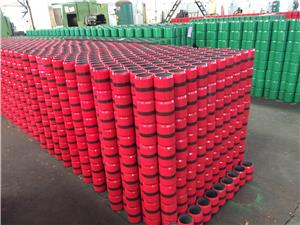A comprehensive comparison between seam steel pipe and ordinary steel pipe
In the field of engineering and construction, both seamless and ordinary steel pipes play a key role, but there are significant differences between them. This article will delve into the differences between seamless steel pipes and ordinary steel pipes, including manufacturing processes, properties and application areas, to help you better understand their characteristics and applicability.
Differences in manufacturing processes:
Seamless steel pipe:
The seamless steel pipe adopts a seamless production process, in which the blank of the raw material is made into seamless tubes through multiple processing steps at high temperatures. This process includes perforation, rolling, drawing and cold drawing steps.The manufacturing process of seamless steel pipes ensures smooth and even surfaces inside and outside the pipes, reducing the possibility of internal and external defects.
Ordinary steel pipe:
Ordinary steel pipes are usually manufactured by the welding process, by rolling steel plates or steel strips into tubes and connecting them through the welding process. This welding will produce a weld, so that the inner surface of the ordinary steel pipe is not as smooth as the seamless steel pipe.
Performance differences:
Seamless steel pipe:
Due to the particularity of its manufacturing process, seamless steel pipes usually have higher strength, tensile strength and pressure resistance. They perform well in high temperature, high pressure and critical applications.When stringent performance and reliability requirements need to be met, seamless steel pipes are the preferred choice.
Ordinary steel pipe:
The welding process of ordinary steel pipes may result in changes in the microstructure of the weld area, which reduces the strength and compressive properties.
Common steel pipes are commonly used in low pressure or non-critical applications, such as general construction and drainage systems.
Internal and external surface quality:
Seamless steel pipe:
The inner and outer surfaces of seamless steel pipes are usually very smooth, with no obvious welds or defects.This makes them suitable for applications that require a high degree of cleanliness or finish, such as the food and pharmaceutical industries.
Ordinary steel pipe:
The weld of ordinary steel pipe can be slightly convex on the internal and external surfaces, which is not as smooth as the surface of seamless steel pipe, and is not suitable for applications requiring a high degree of finish.
Route:
Seamless steel pipe:
Seamless steel pipes are widely used in high temperature and pressure environments, oil and gas pipelines, chemical engineering, nuclear power plants and engineering projects requiring high performance and reliability.They perform well in a variety of critical applications, such as the oil and gas industry, aerospace, nuclear energy and chemical engineering.
Ordinary steel pipe:
Common steel pipes are commonly used in general engineering, construction, drainage systems and low pressure applications, such as water supply pipes, waste water discharge pipes, structural pipes, etc.
They are economical in general industrial and construction applications, but are generally inferior to seamless steel tubes in terms of performance and reliability.




